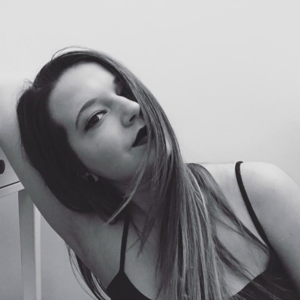Surviving through the holidays is hard: The gifts you have to buy, the money you don’t have for the gifts. You, finding money for the gifts, and your family–you forgot how annoying they are.
You reminding yourself that you share blood, and you love them.
You failing.
So, what keeps your desire for existence still alive?
Food, of course!
I went to Bulgaria, my native land, for the holidays, and cooked stuff with my grandma. Delicious stuff.
1. Bread
One thing you have to know for Eastern European Christmas and New Year’s Eve traditions: WE BAKE BREAD! A LOT OF IT! FOR EVERY HOLIDAY.

This is me trying to get through my lovely grandma’s nagging about how terribly I knead the dough for the bread. But, at the end of the day, the bread came up gorgeous and super tasty! #hatersgonnahate #flawless
Do you remember the “A LOT” part from our bread traditions? Well… we had to make another bread. So my little cousin, at 3 years old, decided to help us out.

Such a cutie!
2. Banitsa
Ok, close your eyes, and imagine the well-known Burek:
Now try to stuff it with a mixture of cheese and eggs. Well, that’s banitsa.
Banica, or banitsa is a very traditional salty pastry for Eastern Europe. It’s made with phyllo dough, cheese, eggs, and sunflower oil or butter. Click here for the recipe.
On New Year’s Eve, we put special messages in hidden places within and on the banitsa, which will tell you what the coming year will be for you.
This year I got, “You will get the career opportunity you’ve always dreamed for,” and “New love, new luck.” We’ll see, we’ll see. Anyway, you get the point.
Banitsa = delicious + brings you luck + tells you the future

3. Cabbage
During the holidays, pickled cabbage is one of the most important star ingredients for the meals on the table. People in Eastern Europe buy raw cabbage, and pickle it themselves. Yes, that’s a thing. So this is how it works:
· They buy cabbage
· They find a big container where the pickling process will take place
· The put the cabbage in the container with a lot of water and salt
· Every day, they take the water out with a hose-pipe, and put it back into the container.
· They do that for at least 25 days.
Even though I encourage everybody to try this out, I honestly would just go to the store, and buy ready-to-use whole pickled cabbage leaves. But that’s my lazy self. You do you.

4. Stuffed sun-dried red peppers with beans
I love this! One of my favorites. You’ll need:
* Boiled beans: we usually use those from a can, because we want to make sure that they are well-boiled
* Sun-dried red peppers which you have to put in water for at least 1 hour in order to soften.
* Salt and pepper
How to make it:
· Open the beans and drain them from the water extra carefully

· Smash the beans slightly with salt, pepper, and the favorite spice of all Eastern Europeans: Chubrica.

· Stuff the peppers with the beans and bake them in a pre-heated oven for around 25-30 minutes.

5. THE MEAT
I will not even try to pretend that Eastern Europeans believe in vegetarianism and veganism. There was so much meat on the table that I felt bad taking pictures of it. But it was there. And it was A LOT. From chicken, pork, and beef, to sausages, ground meat and, of course, more cabbage.
6. Cold cuts
Eastern Europe is famous for their dry meats.
LUKANKA
SUDJUK
FILLET ELENA
7. Drinks
The gallons of alcohol and other substances with suspicious origins we drink on New Year are a whole other thing.
I will just drop a very traditional for Eastern Europe drink here. It’s called Rakia, and it varies between 50% and 80% alcohol concentration. For people who don’t know a lot about booze, that’s a LOT!
I love going home for the holidays. Now you know why.


